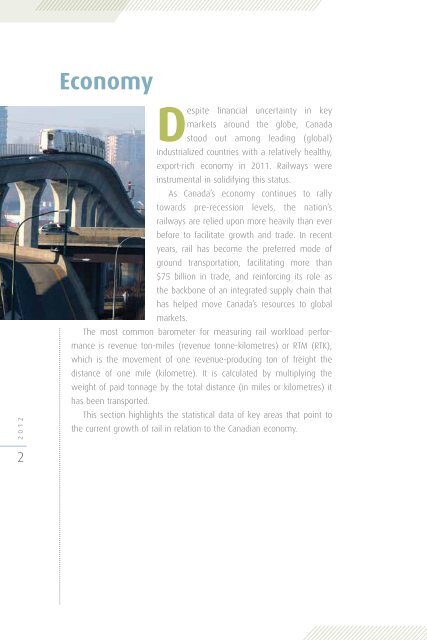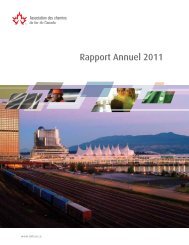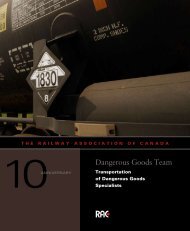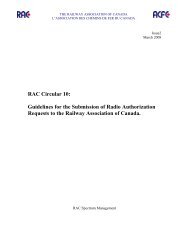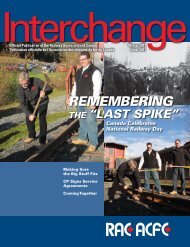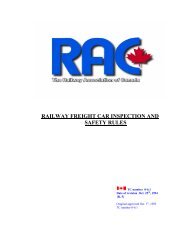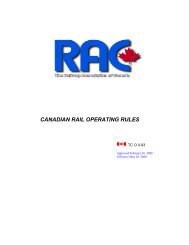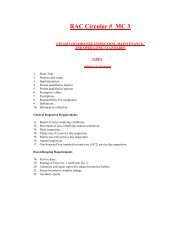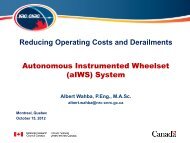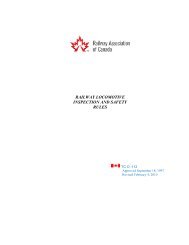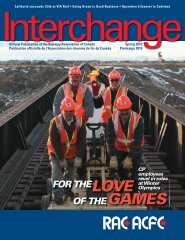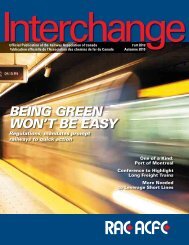2012 Rail Trends - Railway Association of Canada
2012 Rail Trends - Railway Association of Canada
2012 Rail Trends - Railway Association of Canada
Create successful ePaper yourself
Turn your PDF publications into a flip-book with our unique Google optimized e-Paper software.
Economy<br />
22 012<br />
Despite financial uncertainty in key<br />
markets around the globe, <strong>Canada</strong><br />
stood out among leading (global)<br />
industrialized countries with a relatively healthy,<br />
export-rich economy in 2011. <strong>Rail</strong>ways were<br />
instrumental in solidifying this status.<br />
As <strong>Canada</strong>’s economy continues to rally<br />
towards pre-recession levels, the nation’s<br />
railways are relied upon more heavily than ever<br />
before to facilitate growth and trade. In recent<br />
years, rail has become the preferred mode <strong>of</strong><br />
ground transportation, facilitating more than<br />
$75 billion in trade, and reinforcing its role as<br />
the backbone <strong>of</strong> an integrated supply chain that<br />
has helped move <strong>Canada</strong>’s resources to global<br />
markets.<br />
The most common barometer for measuring rail workload performance<br />
is revenue ton-miles (revenue tonne-kilometres) or RTM (RTK),<br />
which is the movement <strong>of</strong> one revenue-producing ton <strong>of</strong> freight the<br />
distance <strong>of</strong> one mile (kilometre). It is calculated by multiplying the<br />
weight <strong>of</strong> paid tonnage by the total distance (in miles or kilometres) it<br />
has been transported.<br />
This section highlights the statistical data <strong>of</strong> key areas that point to<br />
the current growth <strong>of</strong> rail in relation to the Canadian economy.


